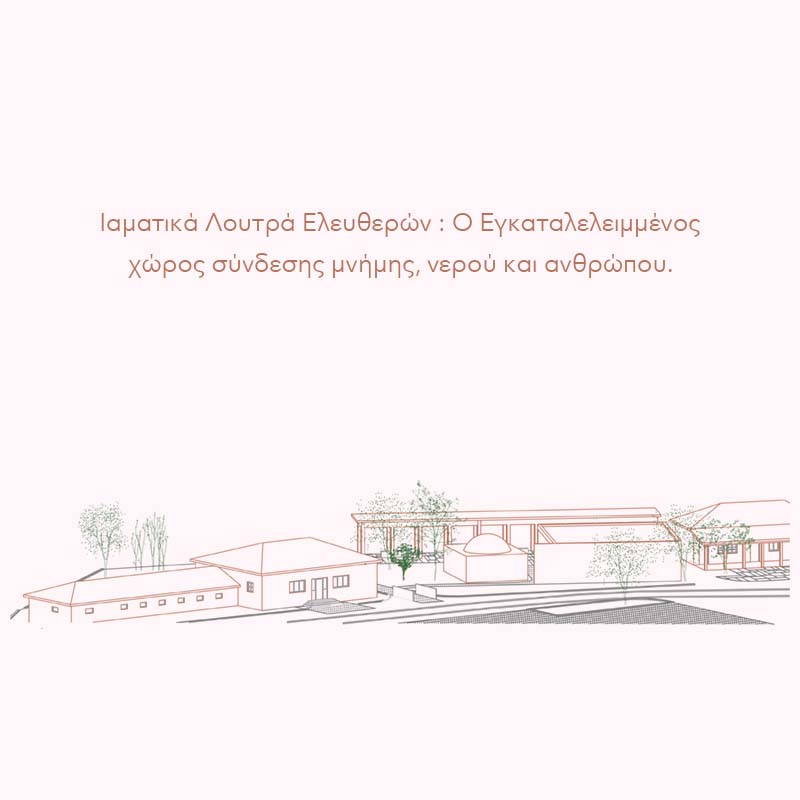

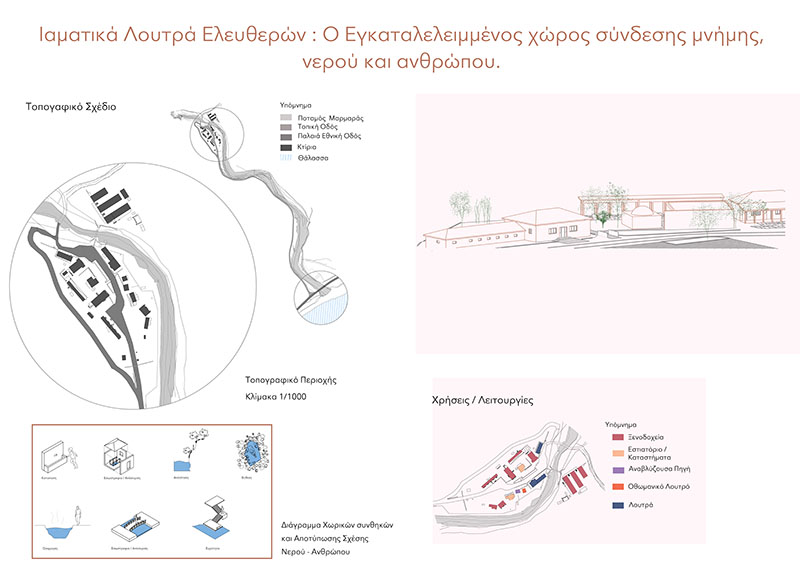

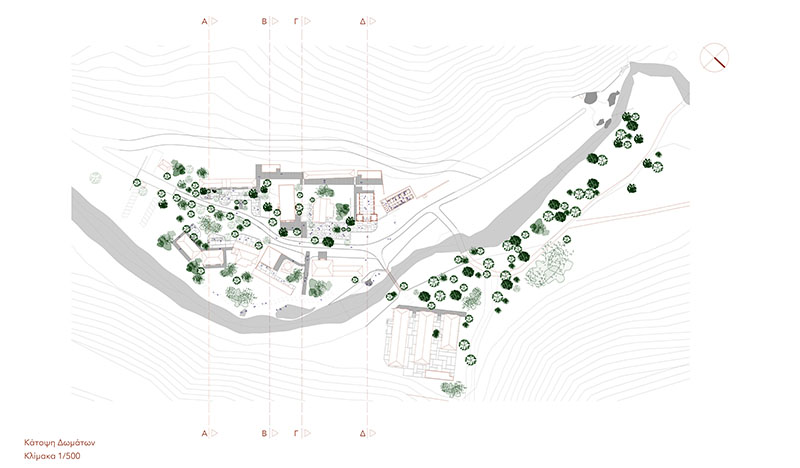



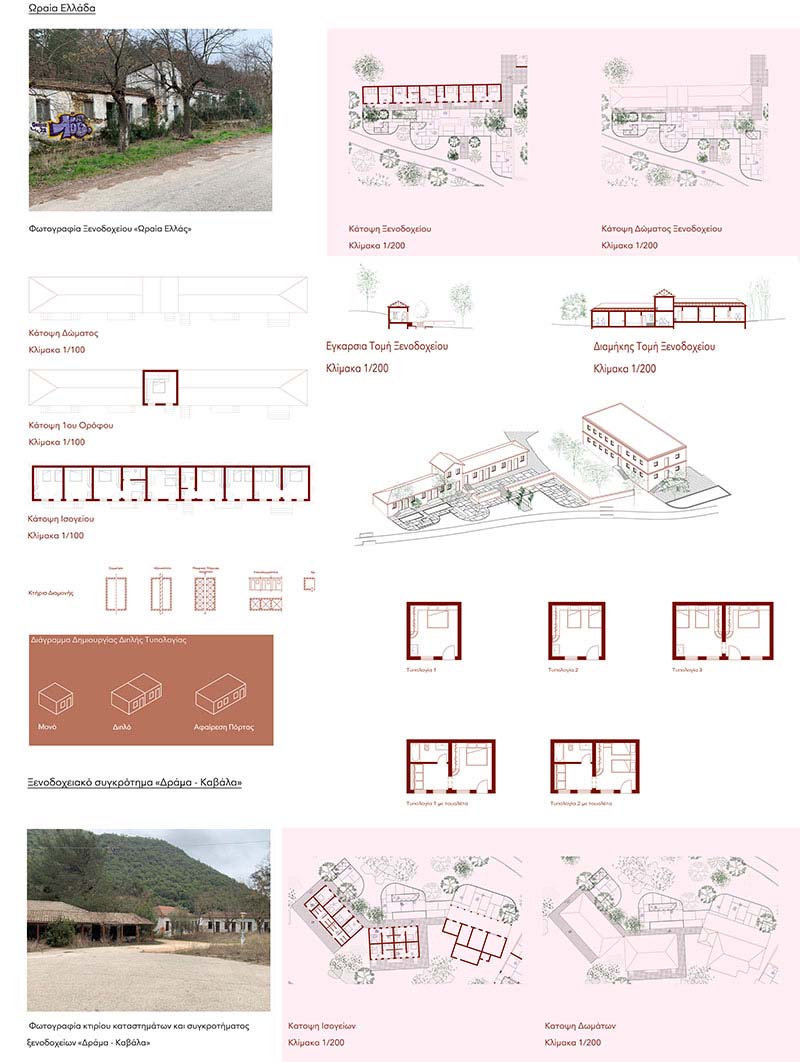



In modern times, during the last few years, spa tourism at natural hot springs in Greece is constantly increase and getting more attractive to tourists of all age groups. Nowadays, more and more people are visiting modernized hydrotherapy centers, ignoring the healing properties that nature generously gives us. From the ancient times, bathing was one of the necessary daily activities for the people. Nowadays, in our society, as it has been evolved, the concept of bathing has changed. Nevertheless, bathing is still one of the basic actions that have the potential to direct the relationship between man and water. The results and assumptions of an extensive research into the different habits, ways and definitions of tourism and holidays; but also through the investigation of the relationship between water and man, the analysis of baths’ history, and finally, after considering the beneficial properties of thermal springs and the history of baths in Greece, the idea of restoring the already existing Loutropolises and connecting them to the natural and peaceful atmosphere surrounding them is born and gradually increases. This study aimed to examine the reconstruction of the exterior and interior of the Loutropolis of Eleftheres. It presents a novel idea of respecting the memory and history of the place, of nature and of the people in the area. The specific baths are chosen because of their unique history and the ideas that built it, the par ticular geographical and natural landscape and its strategic location. A complete proposal is presented, based on its history and the natural environment, yet also, respecting the values under which it was initially organized, and the needs for the visitors who are hosted in the area every year.
Supervisor: Gavrilou Evelyn
Reference Number: 1041
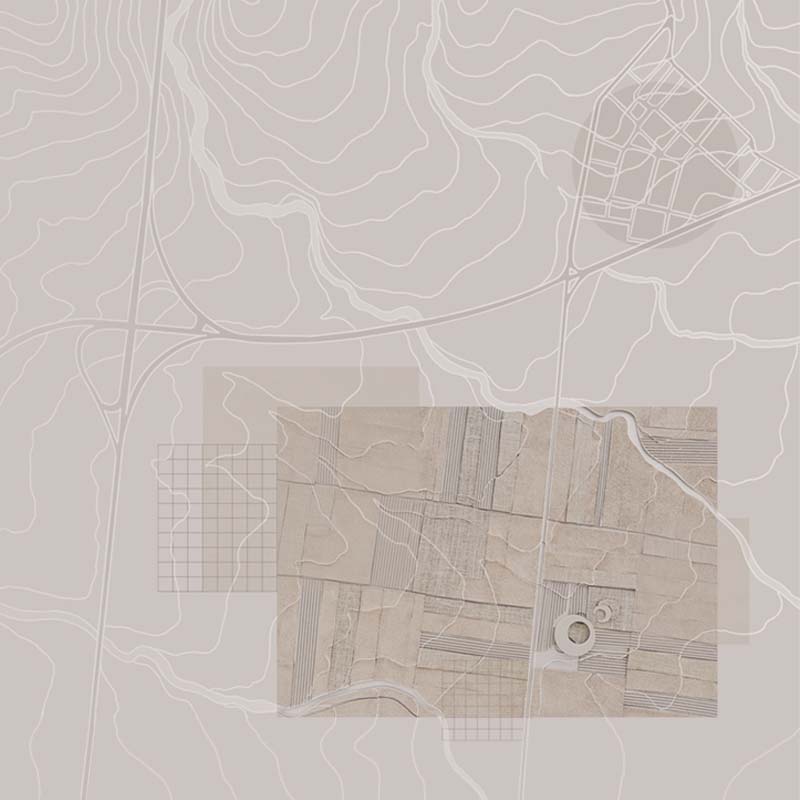

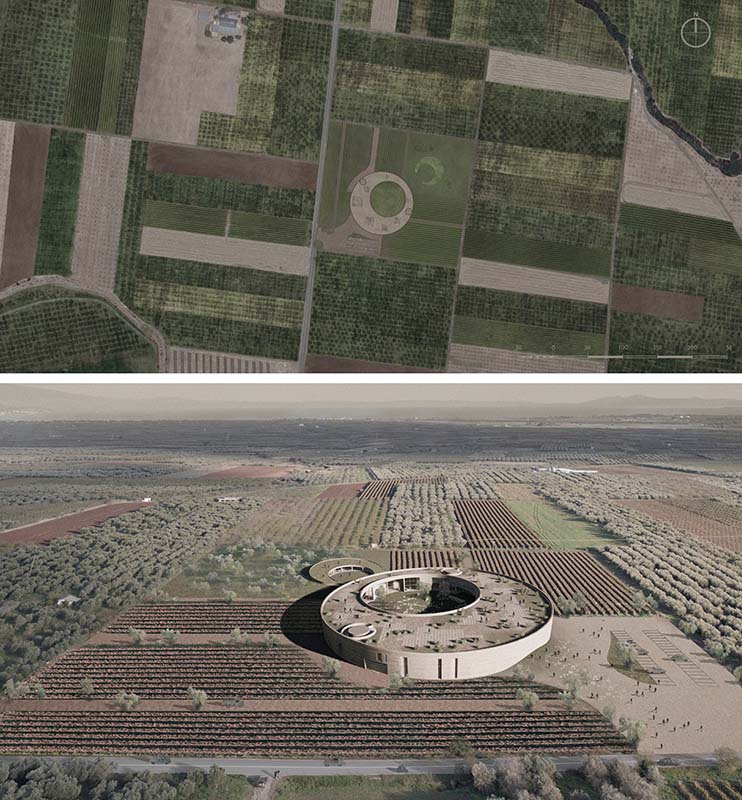

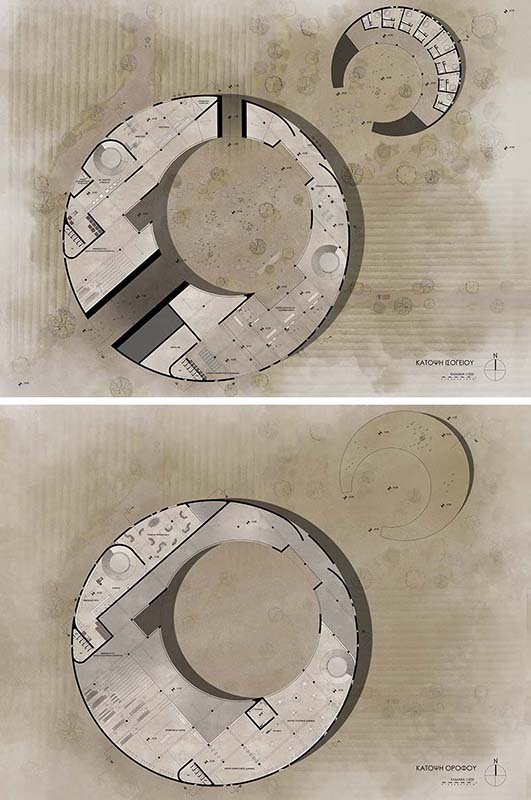

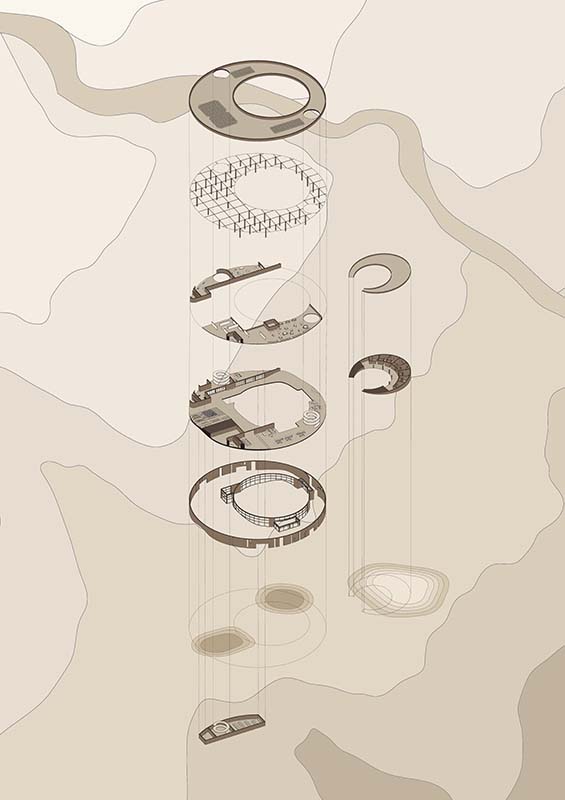

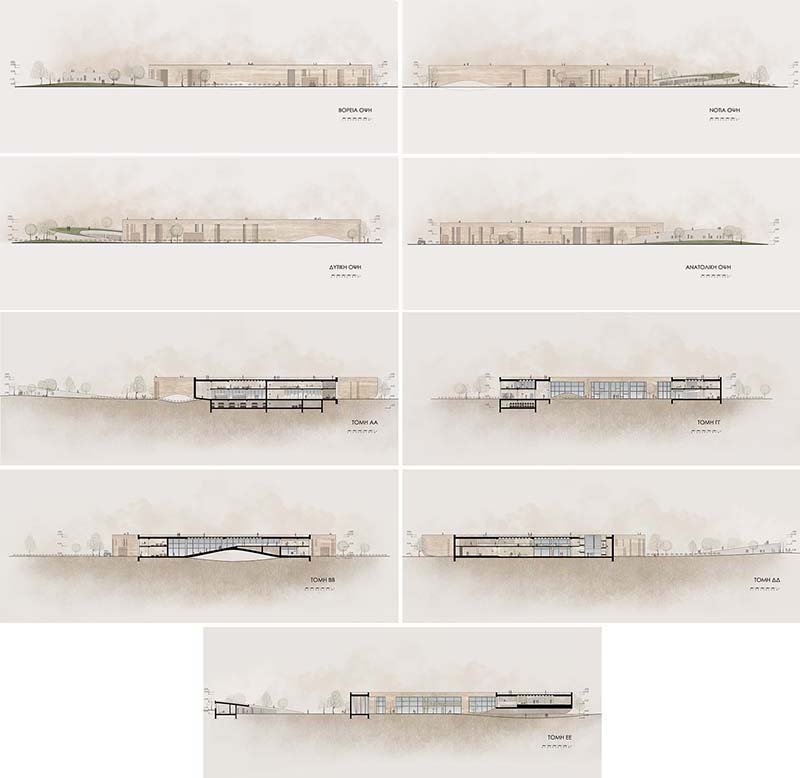

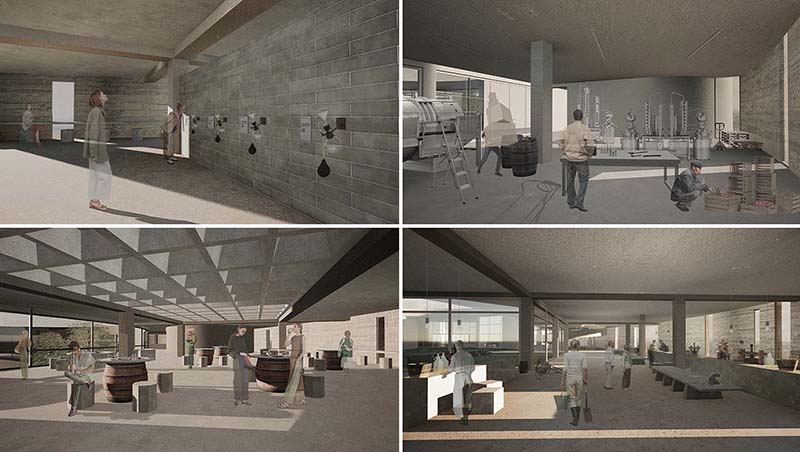

The thesis is about establishing a distillery in the Nea Anchialos area of Magnesia prefecture. This distillery is aimed at meeting suitability standards and serving small-scale distillers. Nea Anchialos is known for its agricultural activity and tradition, particularly in the production of tsipouro.
Our goal is to create a building that ensures the high quality and safety of products, enhancing legality and building public trust. The proposed building will have five functional areas: production, experimentation, education, recreation, and accommodation. It will serve as a hub for the local community, offering visitors the chance to learn about distillation, observe the tsipouro production process, experiment, and taste the produced varieties.
The aim is to make the building a vibrant and dynamic space that connects past traditions with modern life, providing joy and inspiration to all visitors.
Supervisor: Gavrilou Evelyn
Reference Number: 1063
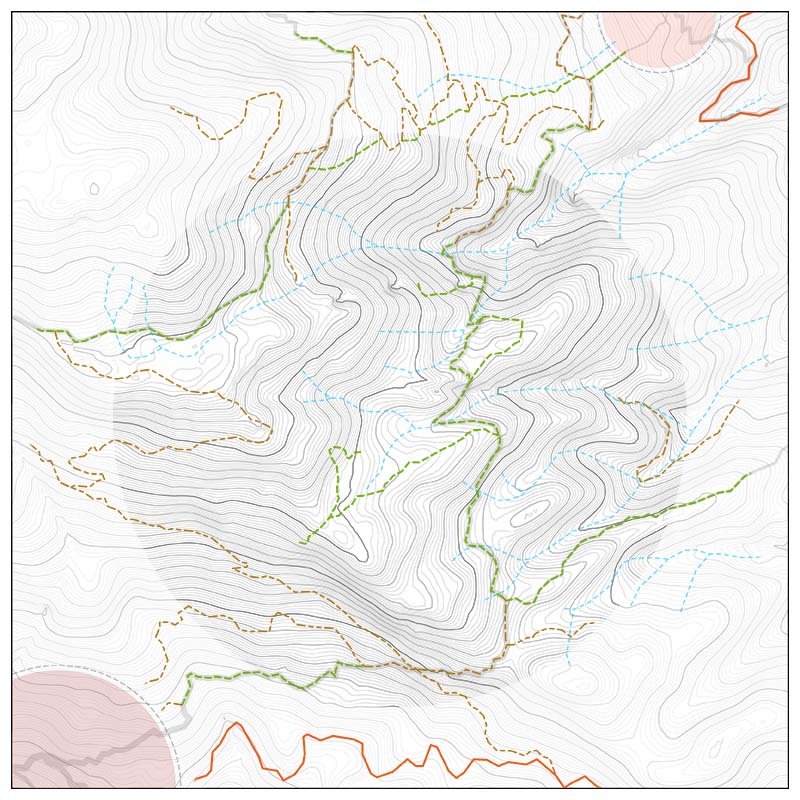

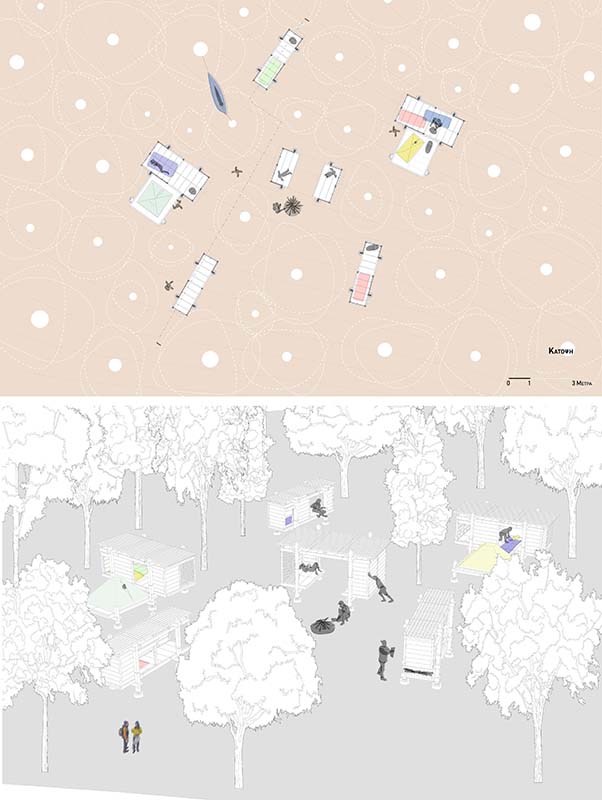

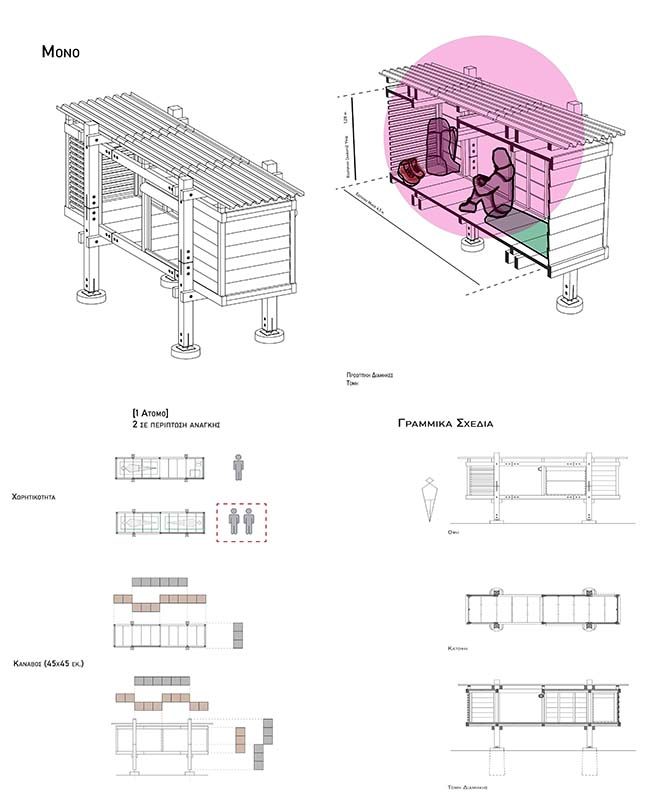

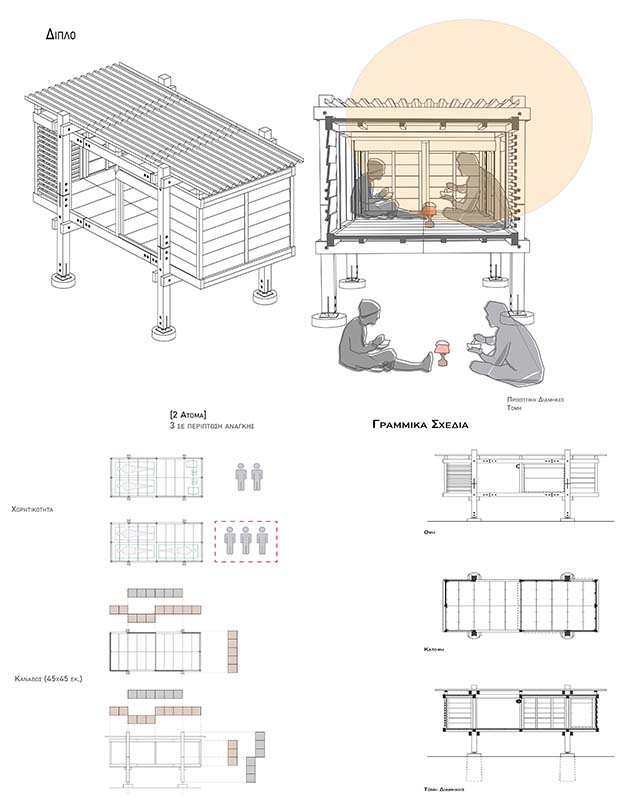

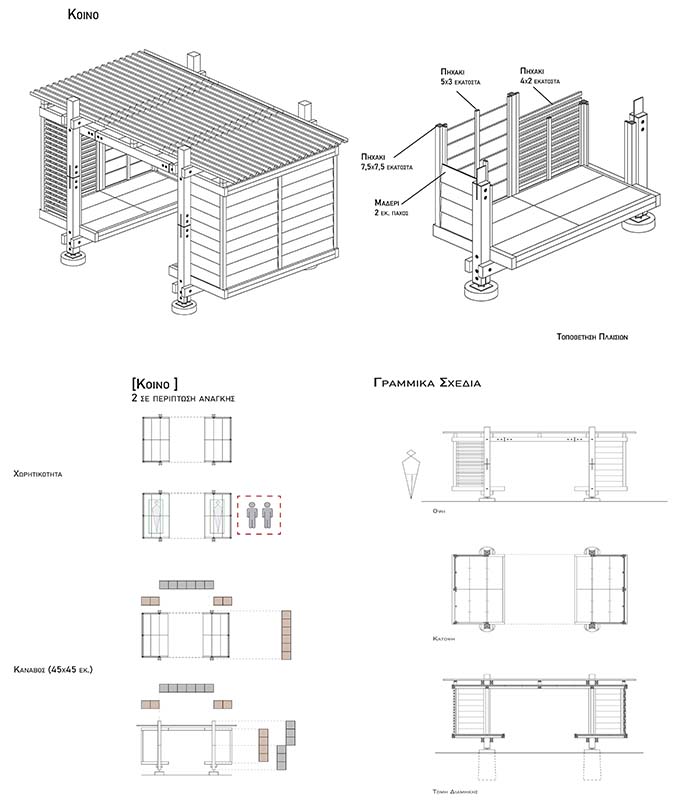

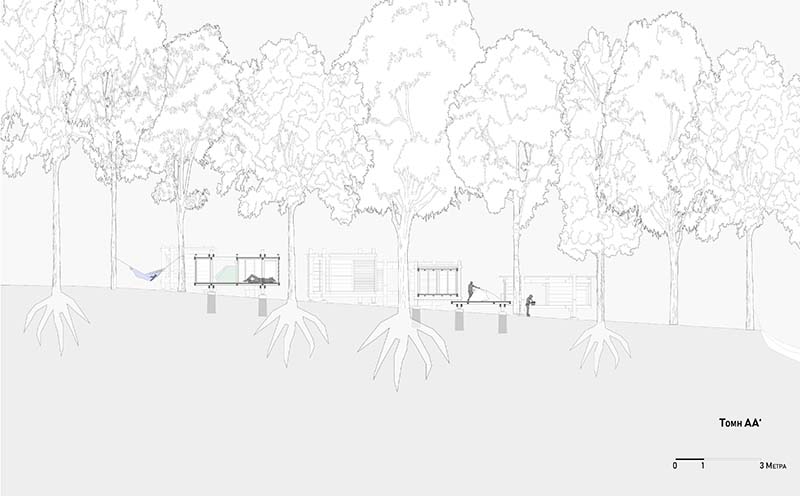

The present thesis concerns the development of a methodology for finding the -optimal- placement of emergency shelters in semi-mountainous and mountainous areas of Greece. The methodology for the construction of the shelter considers its relationship with the existing network of trails and existing shelters. The application of the methodology is developed through the case of Mount Pelion.
The paper is divided into two broader parts, consisting of subparts. The first part concerns the development of a general methodology for the spatial location of an emergency shelter in Pelion Mountain, while the second part concerns its design.
More specifically, in the first part, the hiking network of Pelion is mapped, the existing shelters are studied and, through them, going from the specific to the general, a methodology is designed to determine where an emergency shelter could best be located, based on hiking needs and spatial analysis. It concludes with an analysis of possible locations, arriving at four main ones: Itamos, Tiseo, Krytharies and Chionotrypa.
In the second part, the researcher's personal experiences throughout Greece (2014-2024) are selectively recorded, analysing empirically the basic functions of the shelters visited and the practices that accompany the visit or the overnight stay in them. This recording and analysis formed the basis for possible uses to be included in the new shelter beyond the conventional ones. Following the analysis of the possible sites in the first part, the following is the selection of one -Itamos- from the studied areas, considering their qualitative and quantitative characteristics. The thesis concludes with the architectural design of the emergency shelter, considering its placement in the -calcareous and beech- planted landscape of Itamos. Based on the modularity of a unit and the construction principle for the possibility of repeatability and easy disassembly and assembly, three basic structures were designed: the Single, the Double and the Common. These structures can be integrated/adapted to any landscape and can be multiplied or reduced according to the needs of the upcoming site.
Supervisor: Vrontissi Maria
Reference Number: 1056
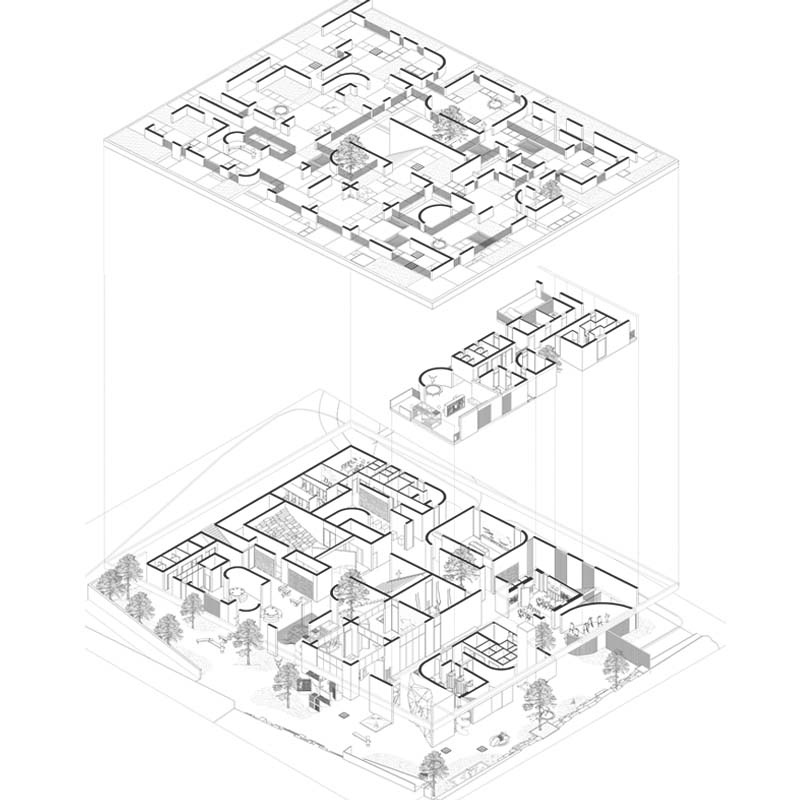

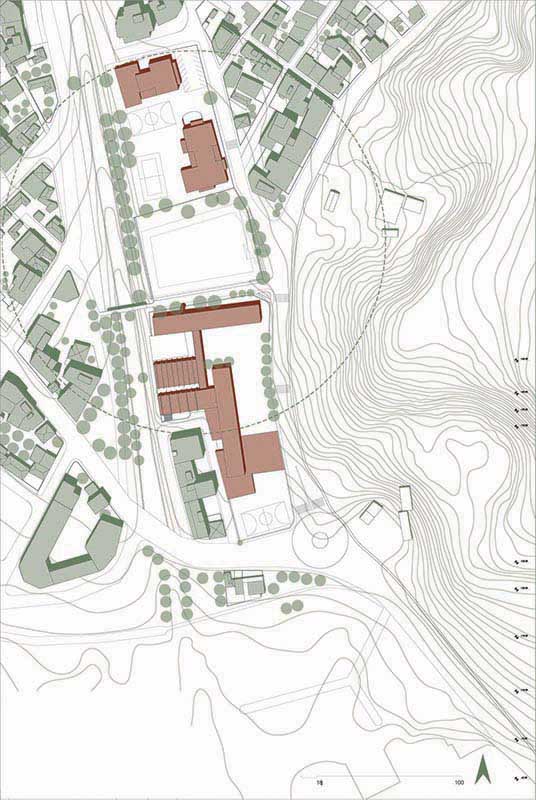

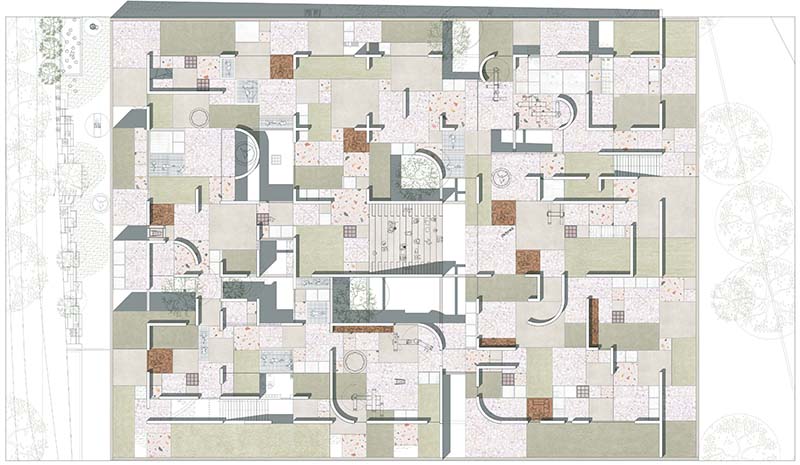



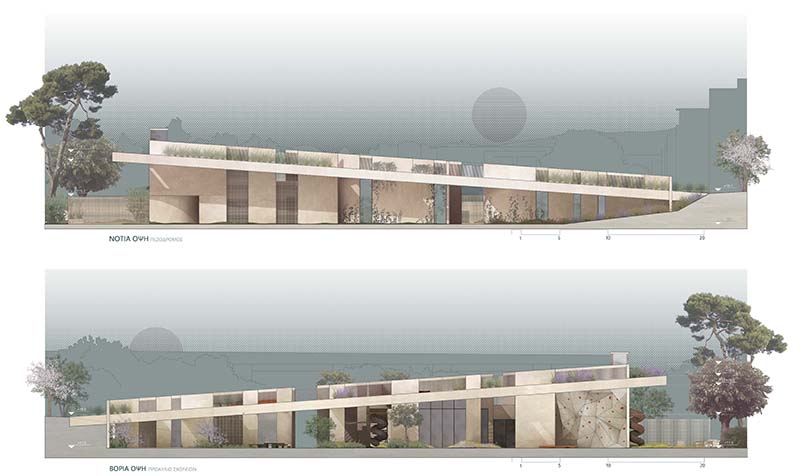

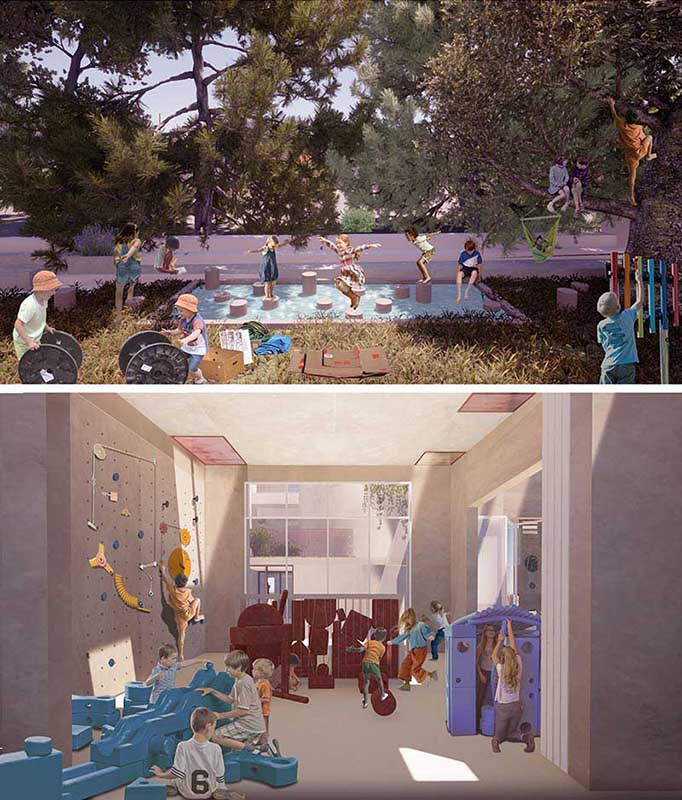

Play is a highly diverse, abstract, kinetic, or mental activity, in which players create a temporarily real world for themselves, a strictly defined spatial experience, which is either completely imaginary or facilitated by using materials. In the modern urban landscape, free, unstructured play gradually began to be stigmatized and suppressed, and the spaces that can accommodate it are diminishing.
With the aim of redefining play spaces, adventure playgrounds are being further studied. These are open, fenced play spaces equipped with tools and materials that may seem useless. This paradoxical model of a playground was implemented for the first time in the ruins of a bombed landscape in Denmark in 1943 and met with great success. It was proposed in many European cities as a component of post-war urban regeneration. Despite the obstacles and concerns it raised to parents, it succeeded in many cases worldwide over time. This space offers children the opportunity to appropriate and alter their environment. This play space stimulates creativity, encourages children to face challenges, and promotes carefree, imaginative play, with the least possible constraints.
In this diploma thesis, the integration of key features of an adventure playground are explored in the design of a building that meets modern requirements and safety regulations. A Center of Creative Activities and Play, which operates with the purpose of caring for and creatively engaging children by educators after school, seemed like the ideal choice to house this project. The intervention area is a lush plot in Volos, near the hill of Goritsa and the Anavros stream. The building is composed there with alterable equipment and walls, allowing the natural landscape to penetrate. It includes play spaces, study areas, and spaces for creative workshops, and organized activities. The building is intended to be altered by the children as it is considered their play place, as well as a place for culture, recreation, and creation.
Supervisor: Gavrilou Evelyn
Reference Number: 1042
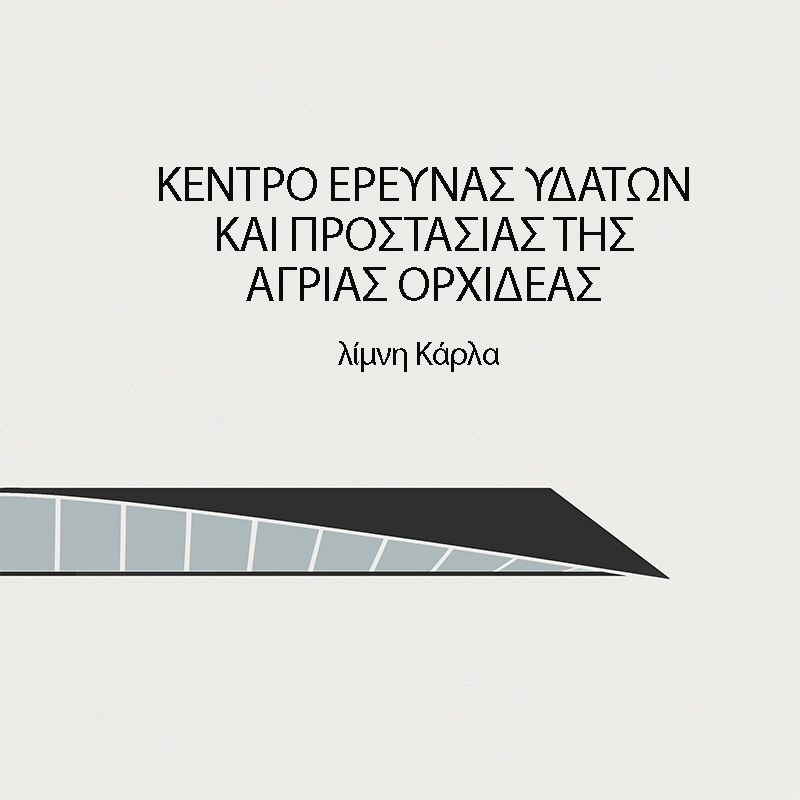

Lake Karla has been one of the most important and diverse wetlands of the Mediterranean. Since ancient times, there is evidence of land-use change projects that have resulted in many wetlands being converted from pockets of life to arable land. Human interventions try unsuccessfully to limit by artificial means, the nature of the lakes instead of co-forming with them. As a result, many of these actions have proven more harmful than beneficial. This thesis deals with the idea of designing an environmental research center for the lake and protection of the wild native orchid as well as a hospitality stop for the resaerchers of lake’s Κarla area. With the primary goal of healthy recovery and stabilization of the lake’s ecosystem, after the floods of last September. The future sustainable coexistence of the surrounding areas with it, but also the subsequent promotion of the rich cultural heritage of the place. The idea of the composition of the facilities tries to assimilate a wide range of people who may visit it from scholars and analysts dealing with the landscape, nature lovers, wildlife photographers, even sections of students or students of the University of Thessaly for seminars or lectures in situ with the aim of informing and raising awareness among young people.
Supervisor: Gavrilou Evelyn
Reference Number: 1089
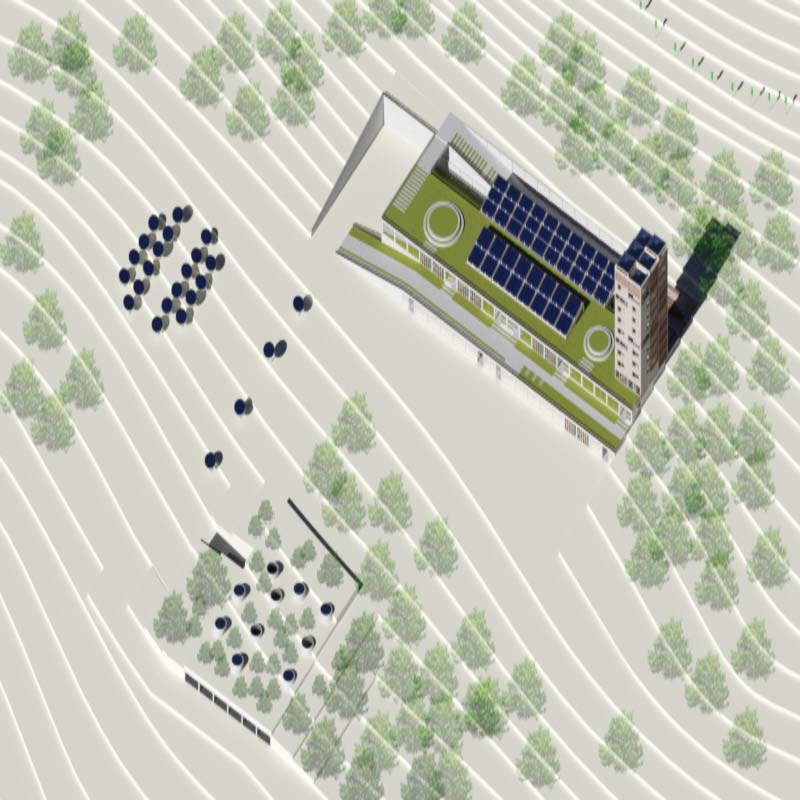

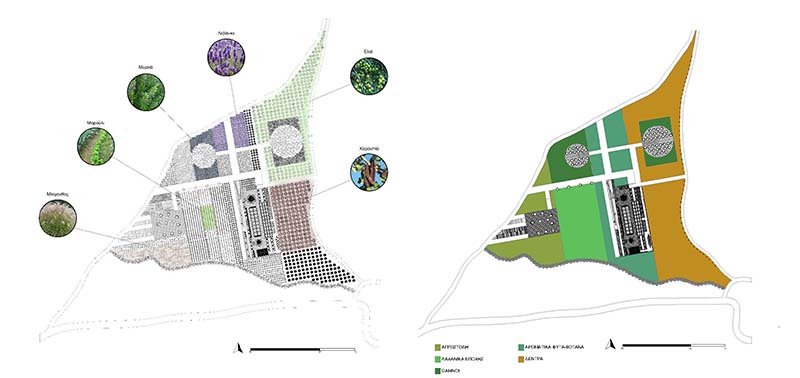

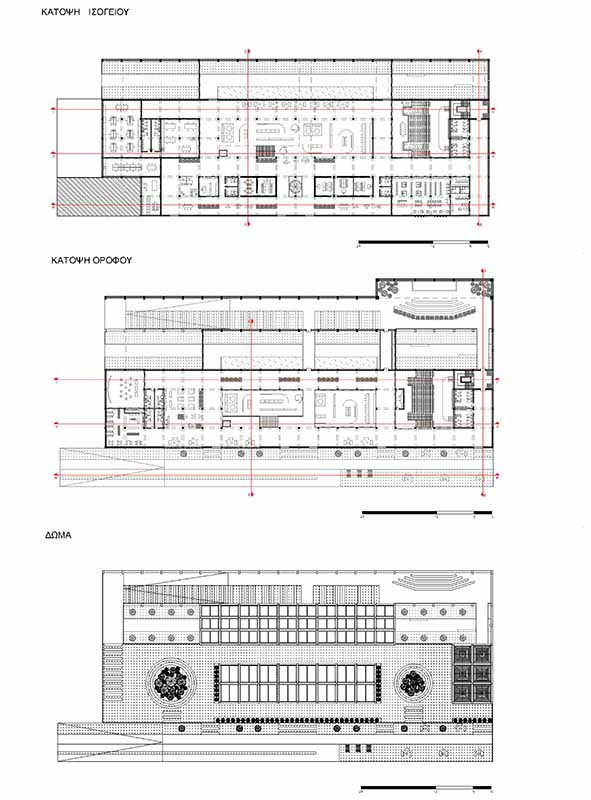

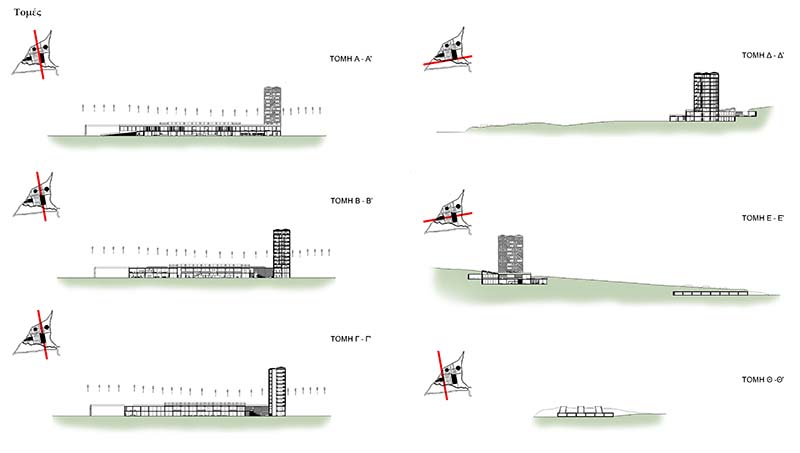

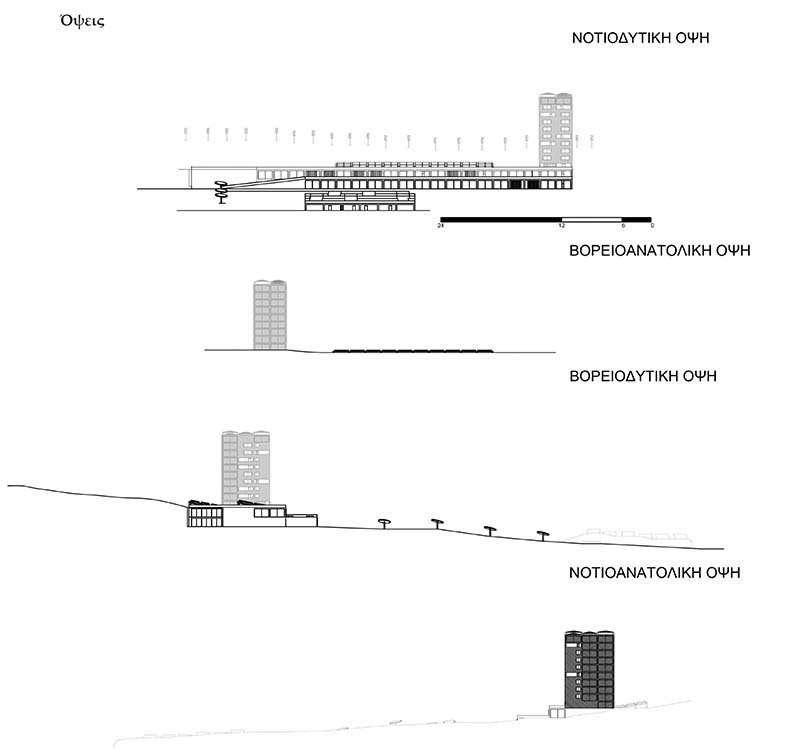

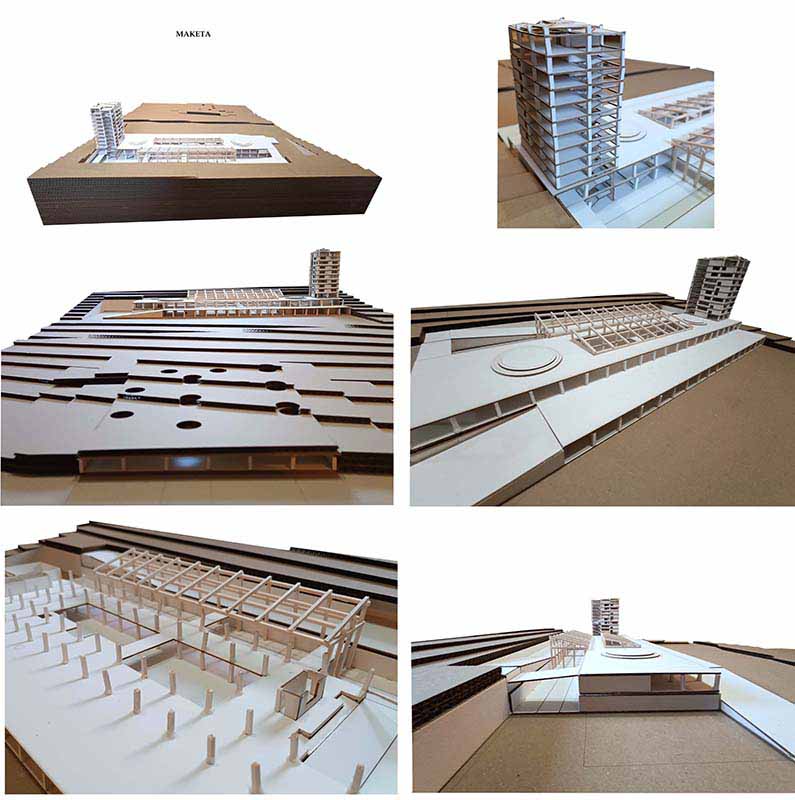

This thesis presents the proposal for the design of an Environmental Education and Research Center in Volos, at the foot of the Hill of Episkopi. The location is of strategic importance as it is situated above the ring road where the urban character fades and next to the provincial road of Volos – Allis Merias, offering easy and direct access to Pelion. The choice of the topic arose from the desire to raise public awareness about environmental issues, which have become a crucial subject of discussion and management, especially in recent years, as climate change is becoming increasingly recognized. The Center, located along the axis of the ring road, has road connectivity and can be accessed via special electric vehicles to the Agricultural University department, which is also situated on the ring road, 3 kilometers away. The Center's interaction with other related institutions, the biodiversity, and society of Pelion and Volos is a significant aspect of its existence. The design of the building is directly related to its contact with the ground and how it encloses it. The design proposal consists of three sections. The first concerns the main building, which comprises the ground floor and one upper floor where all the primary functions of the building are located, such as research laboratories, classrooms, an auditorium, etc. Noteworthy are the two ramps of the building, which allude to the ascent of the hill. The second section is the tower, which is a vertical extension of 10 floors of the main building and includes accommodation apartments for the educational staff, guest speakers, scientists, and on its top floor offers everyone a panoramic view of the area and the plantings and crops present on the Center's site. The third section involves the construction of an underground parking space where the electric vehicles that assist with transportation will also be located. Finally, a significant feature of the Center is its energy autonomy, as it has installations of solar panels and wind turbines that will power the entire building, and thanks to the surrounding crops, it also offers food sufficiency, two elements that emphasize our relationship with the environment.
Supervisor: Stylidis Iordanis
Reference Number: 1067
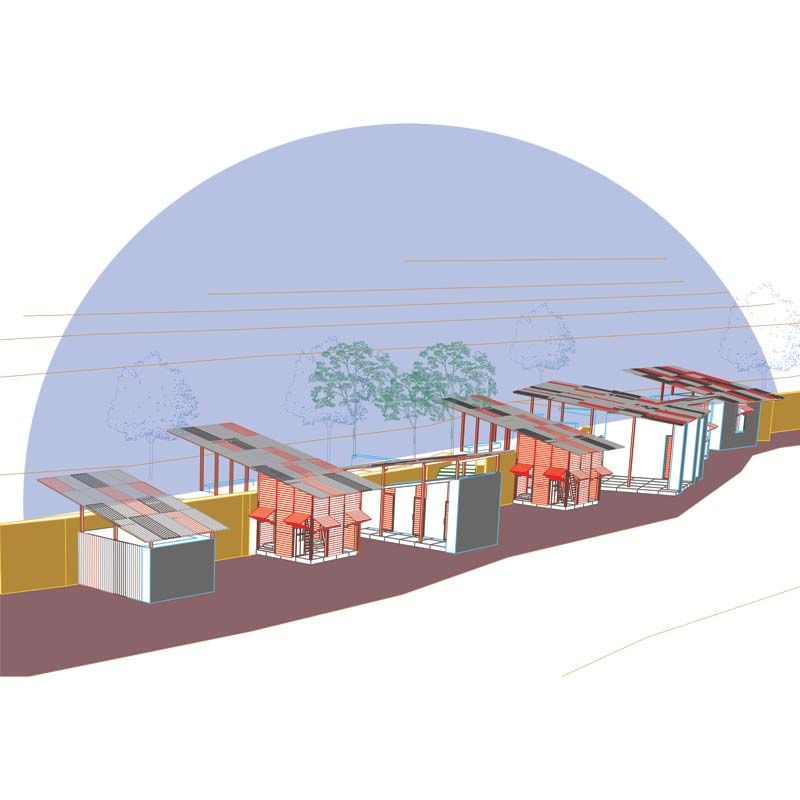

The present study focuses on leveraging architecture for the development of alternative tourism, emphasizing hiking trails. Specifically in Evia, the natural beauty and geomorphology offer numerous opportunities for the development of sustainable tourism activities. Hiking is a key subject of study, as it allows for the promotion of the natural landscape and the advancement of alternative tourism. Architecture contributes through the design of trails and accommodations that harmoniously integrate into the environment, providing hikers with an enhanced experience.The research centers on creating a network of accommodations at strategic points in Northern Evia, designed with respect for the natural environment and cultural heritage. These accommodations, inspired by bivouacs and the ancient Greek concept of "Hestia," will be functional and sustainable, tailored to the needs of hikers for comfort and safety. The use of local materials, such as wood and stone, and the avoidance of harsh interventions in the natural landscape make these accommodations a part of the local nature.The study includes an analysis of geomorphological and meteorological data for selecting the most suitable locations. It also examines the needs of hikers, offering appropriate solutions for lodging, dining, and personal hygiene. The result is the creation of a comprehensive experience that promotes sustainability, connection with nature, and exploration of the landscape of Evia.
Supervisor: Manolidis Kostas
Reference Number: 1092

